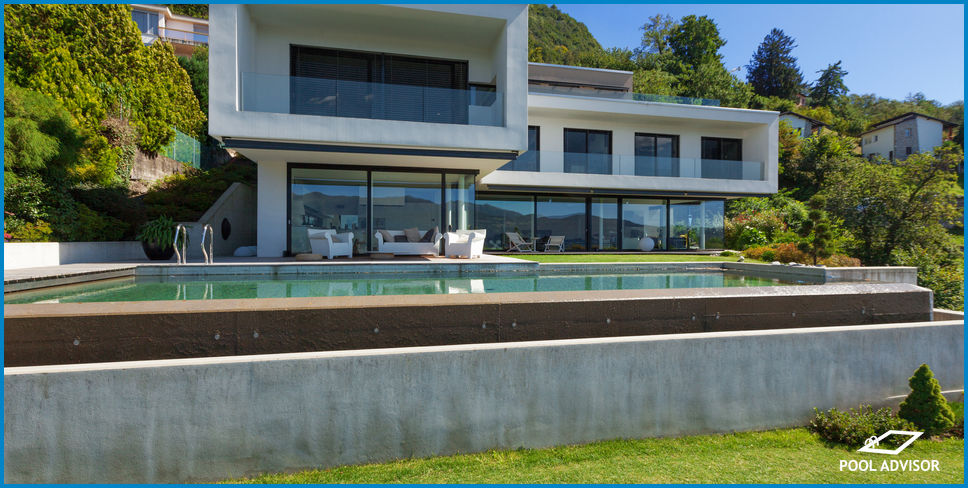
Quartzon Pool Surface Problems - What Are They?
Quartzon pool surfaces are made by blending quartz sand with other natural materials to form a customizable, luxurious pool surface.
With a smoothness parallel to that of fibreglass pools and a variety of colour options available, quartzon pool surfaces are quickly increasing in popularity. However, just like any other pool surface, quartzon has its unique drawbacks.
In this article, we will discuss the most common quartzon pool surface problems that may arise as this interior is installed in your pool so that you can better know what to expect when equipping your pool with this surface material.
General Maintenance
Before getting into quartzon-specific issues, we want to take a moment to talk about pool maintenance in general.
When researching problems with various pool surfaces, including quartzon, you are likely to read that keeping your pool’s chemicals adequately balanced is crucial for the longevity of your pool’s interior.
Put simply, this is equally as true for quartzon surfaces as it is for other finishes you may choose for your pool.
Keeping your pool’s chemicals balanced will extend the life of any pool surface or lining you are using, and it is not accurate to suggest that quartzon linings are more susceptible to chemical-related damage than other types of surface.
This is important to keep in mind as we discuss more quartzon-specific issues.
Surface Degradation
Surface deterioration in a quartzon pool is similar to delamination in a concrete pool. Once the outer layer of your quartzon surface begins to deteriorate, your pool’s water will slowly cause the newly exposed areas of quartzon material to disintegrate.
This happens naturally as the surface begins to age, but can be accelerated by chemical imbalances in your pool’s water (particularly calcium hardness).
Because quartzon is composed of varying mixtures of sand-like materials, those who have this surface installed in their pool typically notice that the texture of their quartzon slowly changes from smooth to rough.
Afterwards, this can quickly accelerate to a sandy, dusty texture, where pieces of the surface break loose when touched.
Calcification Buildup
The most common quartzon pool surface problem is the buildup of calcification.
Although this problem is not specific to this surface, certain materials in the composition of a quartzon lining may be high in calcium, which can increase the amount of dissolved calcium in your pool’s water.
As the amount of dissolved calcium in your pool grows to reach the saturation threshold, there is an increased likelihood of calcium scale developing.
Calcium scale resembles a white, chalky stain that can often occur near the waterline but may form anywhere else on the surface of your pool.
Calcium scale can form on all types of pool surfaces and linings, but luckily, it can be treated chemically and does not require as much scrubbing as you might think.
To learn more about calcium scale, including what causes it to form and various steps you can take to remove it from your pool, check out our article on calcium scale buildup.
Discoloration and Bleaching
The discoloration, stains, and bleaching associated with quartzon lining are all caused by imbalances in your pool’s chemistry.
Being particularly likely if you choose a vibrant colour for your quartzon, this discoloration most often occurs when high amounts of corrosive chemicals are not kept in check in your pool’s water.
High chlorine, high salt, and low pH levels are the most common culprits of discoloration. These three chemical imbalances are typically known to be corrosive, meaning they cause damage to the integrity of the surfaces that they come in contact with.
Keeping your pool chemicals balanced can prevent this discoloration, but unfortunately, there is no way to fix bleached quartzon surfaces other than resurfacing the quartzon entirely.
Conclusion
Quartzon linings offer a unique aesthetic and pleasing texture at a relatively affordable cost compared to other types of pool surfaces.
Although this surface type is not very common, when installed correctly, it is not actually more fragile or susceptible to damage than other types of pool surfaces or linings.
Do you have any questions about quartzon pool surface problems? Get in touch with us in the comments, we’d love to help!

Louis
A chemical engineer by trade, Louis is committed to debunking myths in the pool industry by explaining the underlying chemistry and making it accessible to all.
